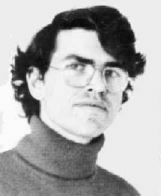

Bill Thurston studied at New College in Florida. He received his B.S. from there in 1967, and moved to the University of California at Berkeley to undertake research under Morris Hirsch's and Stephen Smale's supervision. He was awarded his doctorate in 1972 for a thesis entitled Foliations of 3-manifolds which are circle bundles, which showed the existence of compact leaves in foliations of 3-dimensional manifolds.
After completing his Ph.D., Thurston spent a year at the Institute for Advanced Study at Princeton. Then, in 1973, he was appointed an assistant professor of mathematics at MIT. In 1974 he was appointed professor of mathematics at Princeton University.
Throughout this period Thurston worked on foliations. It is evident that Thurston's contributions to the field are of considerable depth. However, what sets them apart is their marvellous originality. This is also true of his subsequent work on Teichmüller space and the theory of 3-manifolds. His ideas have completely revolutionized the study of topology in 2 and 3
dimensions, and brought about a new and fruitful interplay between analysis, topology and geometry.
His central new idea is that a very large class of closed 3-manifolds should carry a hyperbolic structure. Although this is a natural analogue of the situation for 2-manifolds, where such a result is given by Riemann's uniformization theorem, it is counter-intuitive in the 3-dimensional situation.
Kleinian groups were first studied by Poincaré and a fundamental finiteness theorem was proved by Ahlfors. Thurston's work on Kleinian groups yielded many new results and established a well known conjecture.
Thurston has received many honors. He won the Fields Medal in 1982. He held a Sloan Foundation Fellowship in 1974-75. In 1976, he was awarded the Oswald Veblen Geometry Prize of the AMS. In 1979, he was awarded the Alan T. Waterman Award, being only the second mathematician to receive such an award.